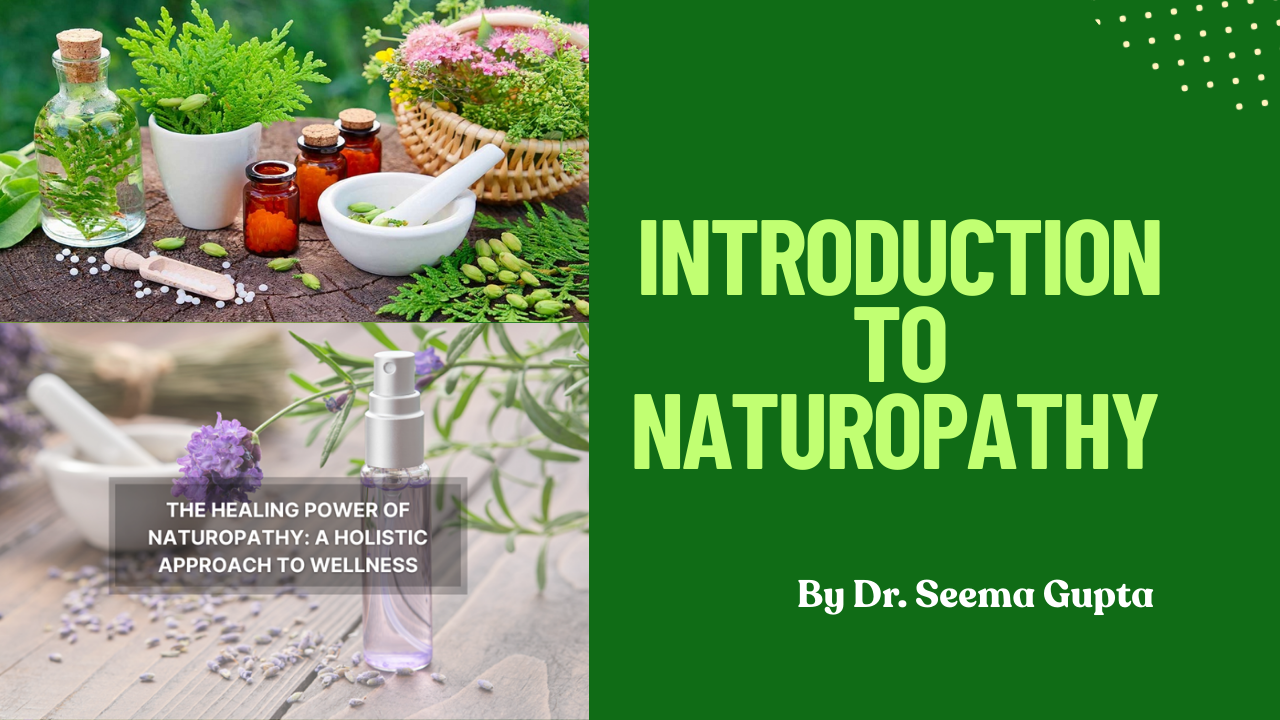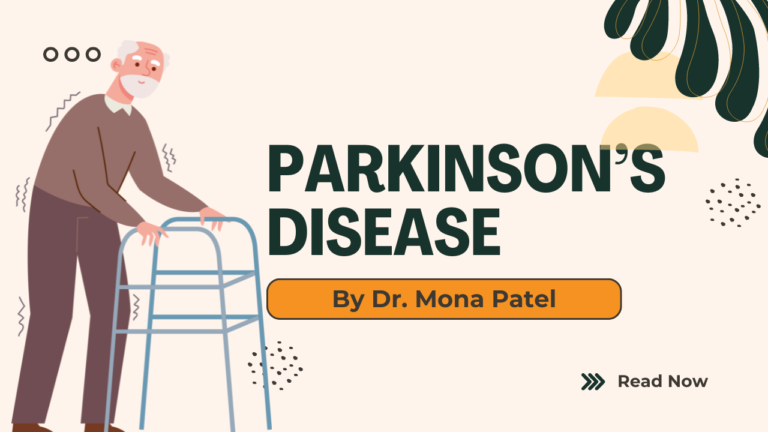Introduction to Naturopathy
🌿 Introduction to Naturopathy

Naturopathy is a holistic healing system that emphasizes natural therapies and the self-healing ability of the body. It is deeply rooted in nature and the five essential elements of life: Earth, Water, Fire, Air, and Ether.
✨ Definition:
Naturopathy empowers the body to heal itself naturally by aligning with the elements of nature.
🌍 The Five Elements of Naturopathy and Their Therapies
🌱 1. Earth Element – Stability and Nourishment
- Therapies:
- Mud therapy (detox and skin purification)
- Massage therapy (relaxation and blood circulation)
- Herbal medicine (natural healing)
- Reflexology (pressure point stimulation)
💧 2. Water Element – Cleansing and Purification
- Therapies:
- Hydrotherapy
- Colon cleansing
- Enema treatments
- These therapies help detoxify the body and maintain internal balance.
🔥 3. Fire Element – Energy and Transformation
- Therapies:
- Heliotherapy (sunlight exposure)
- Fasting therapy (cleansing through controlled eating)
- Heat therapy (pain relief and blood flow)
🌬️ 4. Air Element – Vitality and Breath
- Therapies:
- Outdoor therapy (exposure to fresh air and nature)
- Aroma therapy (using essential oils for mental and physical healing)
🌌 5. Ether (Space) Element – Silence and Consciousness
- Therapies:
- Sound therapy (healing through vibrations)
- Silence therapy (emotional and mental reset)
- Meditation therapy (mindfulness and emotional balance)
🌟 The Philosophy of Naturopathy
Naturopathy believes that nature is the best doctor, and true healing comes from within. It doesn’t just treat symptoms—it aims to restore harmony in the mind, body, and spirit by aligning with nature’s rhythms.
🔑 Core Principles:
- The body has an inherent ability to heal.
- Prevention is better than cure.
- Treat the root cause, not just the symptoms.
- Nature and natural elements are powerful tools for healing.
- Healing happens when we live in tune with natural laws.
What is Naturopathy?
Naturopathy is a natural healing system that aims to restore and support the body’s inherent ability to heal itself. This system combines various natural therapies such as diet, exercise, herbal medicine, yoga, and lifestyle modifications.
Rather than focusing solely on symptoms, naturopathy targets the root cause of health issues and treats the person in harmony with nature. It encourages prevention through a balanced and healthy lifestyle, thereby supporting the body’s internal healing mechanisms.
Philosophy of Naturopathy
The philosophy behind naturopathy emphasizes living in accordance with nature and adopting practices that promote overall wellness. This includes:
- Building a strong immune system
- Maintaining physical, emotional, and mental balance
- Preventing illness rather than curing it
- Supporting the body with natural methods
The Five Elements and Their Role in Naturopathy
Naturopathy believes in the healing power of the five elements:
- Earth (Prithvi) – Mud therapy, nutrition
- Water (Jal) – Hydrotherapy
- Fire (Agni) – Sun therapy, fasting
- Air (Vayu) – Breathing exercises, fresh air
- Space (Aakash) – Fasting, silence therapy
Each therapy works in conjunction with the others to detoxify, rejuvenate, and restore balance within the body.
Core Principles of Naturopathy
- The Healing Power of Nature
The body has an inbuilt ability to heal itself. Naturopathy supports this power through a healthy environment, proper nutrition, exercise, and rest. - Identify and Treat the Cause
Instead of suppressing symptoms, naturopathy focuses on identifying the root cause of an illness—be it physical, emotional, or environmental. - Do No Harm
Natural therapies used in naturopathy are non-invasive and have minimal to no side effects. The approach ensures that healing happens without causing further harm to the body. - Treat the Whole Person
Health is multi-dimensional. Naturopathy takes into account the physical, mental, emotional, and spiritual aspects of an individual. It offers a personalized and holistic treatment plan. - Prevention is Better Than Cure
A strong emphasis is laid on preventing disease by promoting a healthy lifestyle. Simple changes in daily habits can protect from chronic and lifestyle-related disorders.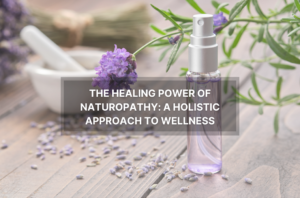 Understanding Naturopathy: A Holistic Approach to Healing Naturopathy is a comprehensive and natural system of healing that looks beyond symptoms to address the root cause of illnesses. It emphasizes harmony with nature, prevention, and the body’s innate ability to heal itself with the right support.A Holistic Approach to Diagnosis and Treatment
Understanding Naturopathy: A Holistic Approach to Healing Naturopathy is a comprehensive and natural system of healing that looks beyond symptoms to address the root cause of illnesses. It emphasizes harmony with nature, prevention, and the body’s innate ability to heal itself with the right support.A Holistic Approach to Diagnosis and Treatment
Naturopathy follows a holistic approach in diagnosing and treating health concerns. Instead of focusing on a single symptom, naturopaths evaluate the patient’s entire lifestyle—diet, daily habits, emotional state, and environment. This approach ensures a deeper understanding of the root cause behind an issue.
For example, in the case of stomach pain, conventional treatment may suggest strong medication. However, a naturopath seeks to identify why the pain is occurring—possibly poor digestion, stress, or an unhealthy diet—and addresses it using non-invasive methods that minimize side effects and complications.
Core Principles Revisited
- First, Do No Harm
Naturopathy uses gentle, natural therapies that avoid harsh chemicals or invasive procedures. The goal is to aid the body’s healing without creating further imbalance. - Treat the Whole Person
Emotional well-being is just as important as physical health. A naturopath considers a patient’s stress levels, sleep habits, mental clarity, and even spiritual state. This ensures a complete and personalized treatment plan. - Prevention is Better Than Cure
One of the main goals of naturopathy is disease prevention. Encouraging good daily habits, a nutritious diet, exercise, and emotional balance can prevent many chronic and lifestyle-related illnesses. Even in children, minor recurring issues can be prevented with simple natural maintenance routines. - Education and Empowerment
Naturopathy believes in educating and empowering patients. When people understand how their body functions and how daily habits affect health, they become active participants in their own healing journey.
Therapies That Soothe Both Body and Mind
Naturopathy includes a variety of therapies to support mental and physical well-being:
- Yoga and Relaxation Techniques: These calm the mind and reduce stress.
- Breathing Exercises (Pranayama): Especially effective for anxiety, improving oxygen flow and mental clarity.
- Spiritual Healing: Naturopathy supports inner balance and self-awareness as part of the healing process.
Each patient receives a customized treatment plan, integrating these therapies according to their unique needs.
Philosophy of Naturopathy: Nature is the Best Healer
At the heart of naturopathy lies the belief that the body has a natural capacity to heal itself when supported by:
- Rest
- Proper nutrition
- Natural remedies
- A clean and stress-free environment
Naturopathy avoids interfering unnecessarily in the body’s healing process. Instead, it offers support that strengthens immunity, boosts vitality, and enhances resilience through gentle, nature-based methods.
Naturopathy: A Holistic Path to Health and Harmony
Naturopathy is more than just a system of healing—it’s a philosophy of life. It focuses on managing stress, treating the root cause of illnesses, and restoring balance between the body, mind, and spirit. Rather than masking symptoms, naturopathy works to identify and eliminate the underlying causes of disease, promoting long-term wellness.
Treating the Whole Person
Naturopathy sees every individual as a complete being—a combination of physical health, mental stability, and emotional balance. This approach considers factors such as:
- Poor eating habits
- Emotional stress
- Sleep patterns (like insomnia)
- Lack of physical activity
- Disconnection from nature
Each of these can contribute to health imbalances. That’s why it’s essential to treat the whole person, not just isolated symptoms.
Living in Harmony with Nature
Humans are a part of nature—just like plants and animals. Naturopathy encourages us to live in sync with natural rhythms by embracing:
- Seasonal fruits and vegetables
- Clean drinking water
- Fresh air and daily sunlight
- A lifestyle that reflects nature’s balance
By aligning with these principles, we naturally boost our immunity, vitality, and overall well-being.
Gentle and Natural Treatments
Naturopathy uses safe, non-invasive methods to support the body’s healing process. These include:
- Yoga – Physical postures, breathing techniques, and meditation to promote mental clarity and reduce stress
- Herbal Remedies – Natural plant-based medicines to support internal balance
- Hydrotherapy – The use of water for cleansing and detoxifying the body
- Detoxification – Supporting the body’s natural elimination pathways through diet, rest, and natural treatments
These therapies are gentle and respect the body’s rhythm, avoiding the harsh effects of modern medications.
Taking Responsibility for Your Health
Naturopathy emphasizes personal responsibility. Your health is like a garden—it requires nurturing, attention, and care. This involves:
- Eating nutritious meals
- Staying physically active
- Managing stress
- Making conscious lifestyle choices
- Staying connected with a supportive community
By empowering individuals with education and self-awareness, naturopathy enables people to take control of their well-being.
The Role of Diet and Daily Habits
Many modern health issues are rooted in daily habits. Frequent consumption of:
- Fast food
- Spicy, oily meals
- Skipping breakfast
- Drinking excessive coffee
…can lead to digestive imbalances, low energy, and chronic discomfort.
Naturopathy recommends a return to simple, wholesome meals like rice, fresh vegetables, fruits, and balanced hydration. Even small shifts—like taking 10 minutes daily for deep breathing, evening walks, and proper posture at your desk—can create a powerful impact on your health.
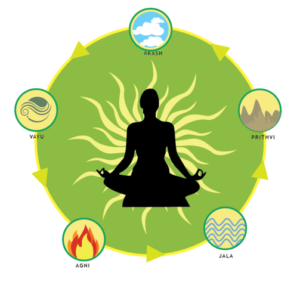
The Five Elements of Naturopathy: Nature’s Blueprint for Health
Naturopathy believes that true healing begins by treating the whole person—physically, mentally, and emotionally. Stress, poor sleep, and dehydration are often overlooked but play a huge role in our overall health. Through proper hydration, quality sleep, stress management, and education, we can prevent future health problems and live a healthier life.
At the core of this healing philosophy lies the Five Elements of Naturopathy: Earth, Water, Fire, Air, and Ether (Space). These elements form the foundation of our body and environment, and each one is linked with specific naturopathic therapies.
- Earth – The Foundation of Strength
The Earth element represents the solid structures of the body—bones, muscles, skin, and tissues. Just as the earth nourishes plants, it also provides grounding and stability to our body.
Earth Element Therapies:
- Nutrient-rich foods: Whole grains, root vegetables (like sweet potatoes), fruits, and legumes
- Grounding meals: Balanced, home-cooked food that supports strength and immunity
- Earth-based therapies: Mud therapy, dry therapy, massage therapy, and reflexology
- Mineral-rich treatments: Using natural minerals to detoxify and revitalize the body
- Water – The Cleanser
Water symbolizes fluidity and purification. It governs bodily fluids such as blood, saliva, lymph, and digestive juices. It plays a vital role in detoxification and temperature regulation.
Water Element Therapies:
- Hydration: Drinking enough clean water daily
- Hydrotherapy: Naturopathic water-based treatments for internal cleansing
- Cooling foods: Cucumber, watermelon, coconut water to balance excess heat
- Detox routines: Baths, wet packs, and steam treatments to remove toxins
- Fire (Agni) – The Transformer
Fire or Agni represents the body’s metabolic functions, including digestion and energy transformation. A strong digestive fire is essential for nutrient absorption and disease prevention.
Fire Element Therapies:
- Spices: Natural spices like ginger, turmeric, and black pepper to stimulate digestion
- Proper eating habits: Mindful eating, avoiding overindulgence, eating on time
- Sun therapy: Using sunlight to boost immunity and metabolism
- Fasting therapy: Occasional fasting to give the digestive system rest and rejuvenation
- Air – The Breath of Life
Air governs movement and circulation—the breath, the nervous system, and the energy that flows through the body. Proper breathing improves oxygen supply and calms the mind.
Air Element Therapies:
- Pranayama (Breathing exercises): Deep and rhythmic breathing to reduce stress
- Physical activity: Walking, yoga, and gentle stretches to improve circulation
- Mental calmness: Regulating thoughts and emotions through breath control
- Fresh air exposure: Spending time in nature, away from pollution
- Ether (Space) – The Element of Connection
Ether or space is the most subtle element, representing the space within and around us. It includes body cavities, joints, and channels of communication between cells and organs.
Ether Element Therapies:
- Meditation & Silence Therapy: To reconnect with the inner self and relieve mental clutter
- Mindful living: Practicing awareness in eating, movement, and interactions
- Fasting & rest: Creating physical and mental space for the body to heal naturally
- Spiritual connection: Engaging in prayer, journaling, or nature walks
Mud Therapy & Compresses in Naturopathy: Natural Healing Through the Earth Element
Mud therapy is a powerful, natural healing method rooted in the Earth element of naturopathy. It works by detoxifying the body, reducing inflammation, and restoring balance. By applying mud or compresses to specific parts of the body, we can draw out toxins, cool inflammation, and promote internal healing.
How Mud Therapy Works
Mud has a pulling or absorbing effect—it helps draw out toxins and impurities from the body. When applied to the skin, it cools the area, soothes inflammation, and improves blood circulation. This therapy is especially helpful for:
- Skin conditions (like acne, eczema, sunburn)
- Muscular or joint pain
- Menstrual cramps
- Swelling or localized inflammation
The therapy also helps in increasing oxygen flow to tissues, improving overall vitality and healing.
Types of Mud Used in Naturopathy
Different types of mud are rich in minerals and serve unique healing purposes:
- Clay Mud – Absorbs toxins and tightens the skin
- Sea Mud – Rich in natural salts and beneficial for detoxification
- Volcanic Mud – High in sulphur, used for skin and scalp treatments
- Black Soil or Riverbed Mud – Found near water bodies and ponds, rich in minerals and safe when sourced from unpolluted areas
Always ensure the mud used is free from chemical contamination and safe for therapeutic use.
Methods of Application
- Mud Packs / Compresses
- Applied warm and damp to specific areas such as the abdomen, joints, or forehead
- Helps in relieving muscle tension, menstrual cramps, and swelling
- Reduces discomfort and promotes local healing
- Mud Bath
- The entire body is immersed in mineral-rich mud
- Helps in relaxation, skin rejuvenation, and detoxification
- Often followed by a warm water rinse or light massage
- Facial or Skin Application
- A thin layer of mud applied to the face or skin
- Useful in treating acne, sunburns, or general skin inflammation
- Improves skin texture and acts as a natural screen for harmful pollutants
Benefits of Mud Therapy
- Reduces body heat and inflammation
- Soothes tired muscles and aching joints
- Promotes skin health and detoxifies pores
- Improves circulation and boosts natural healing
- Helps with chronic pain and inflammatory conditions
Natural Therapies in Naturopathy: Mud Therapy & Diet Therapy
Naturopathy believes in the body’s innate ability to heal itself when supported with nature’s elements. Two such powerful healing modalities include Mud Therapy and Diet Therapy. These methods aim not just to treat, but to prevent disease and promote long-term health.
Mud Therapy: Cooling, Detoxifying, and Healing
Mud therapy is a core naturopathic treatment known for its cooling and pain-relieving properties. By applying natural mud packs to various parts of the body, this therapy helps relax muscles, reduce inflammation, and soothe the nervous system.
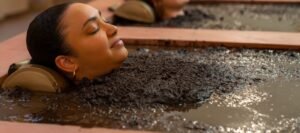
Benefits of Mud Therapy:
- Muscle relaxation and stress reduction
- Improves skin health — helps treat acne, eczema, psoriasis, sunburn
- Effective in joint pain, headaches, and even fevers
- Enhances circulation, draws out toxins, and provides a sense of calm
- Reduces symptoms of anxiety and stress
This therapy is especially beneficial when used in multiple sessions over time. It supports the body’s detox process, enhances hydration, and aids natural rejuvenation.
Safety Note: Ensure the mud used is free from contamination and avoid extreme temperatures to prevent skin damage. Keep the body well-hydrated post-therapy to help flush out toxins.
Diet Therapy in Naturopathy: Let Food Be Thy Medicine
In naturopathy, Diet Therapy is more than just eating healthy—it’s about using food as medicine to restore balance and vitality. This approach emphasizes fresh, unprocessed, and nutrient-dense foods that are easy to digest and align with the individual’s constitution and health condition.
Core Principles of Diet Therapy:
- Focus on natural, whole foods
- Include organic fruits, vegetables, whole grains, legumes
- Avoid processed snacks, refined grains, additives, and chemical-laden foods
- Choose food combinations that aid digestion and nutrient absorption
- Adapt meals to suit age, lifestyle, and health conditions
The philosophy of diet therapy supports prevention, healing, and energy balance through mindful and seasonal eating. Foods are chosen based on their healing qualities, such as warming or cooling effects, and their ability to nourish specific organs or systems.

Diet Therapy in Naturopathy: Personalized Healing Through Food
In the world of naturopathy, Diet Therapy is not just about food — it’s about using the right kind of food in the right way to restore health, detoxify the body, and prevent disease. Every person has unique needs, and diet therapy honours this by offering individualized food plans based on age, health condition, constitution, and lifestyle.
🌱 Core Principles of Diet Therapy
Naturopathic diet therapy revolves around balancing the macronutrients — carbohydrates, proteins, fats, and fibre — while ensuring they are sourced from natural, fresh, and unprocessed foods.
A typical balanced meal may include:
- Carbohydrates: Like oatmeal
- Healthy fats: From milk or seeds
- Fiber and antioxidants: From fresh fruits or berries
This approach supports energy levels, improves digestion, and boosts the immune system — all while being gentle on the body.
🍲 Customized Approaches in Diet Therapy
One size doesn’t fit all. Different health conditions require different diet plans. For example:
- High Blood Pressure: Emphasis on cooked vegetables and low-sodium foods
- Digestive Issues: Easily digestible, warm meals that soothe the gut
- Chronic Conditions: Use of detox-focused foods and elimination diets
The goal is to balance the body’s internal systems through food, minimizing the need for medication and supporting long-term wellness.
🥗 Types of Diet Therapies in Naturopathy
- Balanced Diet
- A holistic mix of protein, carbohydrates, fats, and fibre
- Supports daily nourishment and disease prevention
- Vegetarian Diet
- Excludes animal products, focuses on plant-based nutrition
- Rich in fibre, vitamins, antioxidants
- Helps lower cholesterol, reduce the risk of heart disease, diabetes, and cancer
- Raw Food Diet
- Emphasizes uncooked and unprocessed food
- Preserves natural enzymes for better digestion
- Promotes detoxification and nutrient absorption
- Includes salads, raw fruits, and cold-pressed juices
- Fasting & Juice Therapy
- Involves temporarily refraining from solid food to give the digestive system a rest
- Helps detoxify the body, reduce inflammation, and balance blood sugar levels
- Juice therapy offers nourishment while cleansing the system gently
 💧 Hydration & Water Diet TherapyWater is an essential element in diet therapy. It supports:
💧 Hydration & Water Diet TherapyWater is an essential element in diet therapy. It supports:
- Digestive health
- Detoxification
- Stress reduction
- Improved metabolism
Depending on individual needs, water-based diets or fasting with warm water may be recommended.
🌿 Juice Therapy & Massage Therapy in Naturopathy: A Natural Path to Healing
Naturopathy believes in the healing power of nature. Among its most effective and non-invasive methods are Juice Therapy and Massage Therapy. These therapies, when practiced consistently, help detoxify the body, reduce stress, enhance vitality, and restore overall balance.
🍹 Juice Therapy: Fresh Nutrition for Inner Healing
Juice Therapy in naturopathy involves the use of freshly squeezed juices — not packaged or processed ones — from organic fruits and vegetables. These juices are rich in vitamins, minerals, enzymes, and antioxidants, providing deep nourishment and supporting natural healing.
⭐ Benefits of Juice Therapy:
- Detoxifies the body by flushing out toxins
- Boosts immunity and digestion
- Improves liver health (e.g., beetroot and carrot juices)
- Anti-inflammatory properties (e.g., ginger juice for nausea, joint pain, or morning sickness)
- Reduces cholesterol and supports heart health
- Aids in managing muscle pain and fatigue
A simple juice routine might include:
- Warm lemon water in the morning: Detoxifier and digestive booster
- Ginger tea: Soothes upset stomach and relieves morning sickness
- Beetroot + carrot + ginger juice: Cleanses the liver and supports healthy skin
These natural drinks are easy to prepare, refreshing, and highly effective when incorporated into daily diet therapy.
🥣 Sample Diet Therapy Meal Plan
Incorporating juice therapy into a naturopathic diet:
- Breakfast: Oatmeal with berries, flaxseeds (fibre, healthy fats, and complex carbs)
- Mid-morning: Fresh vegetable juice (e.g., spinach, cucumber, apple)
- Lunch: Warm vegetable soup, whole grain chapati, salad
- Snack: A fruit like apple or pear, or a handful of nuts
- Dinner: Mixed steamed vegetables (carrot, broccoli) with brown rice
This plan focuses on fresh, organic, and whole foods that detoxify and rejuvenate the body — an essential part of Earth Element Therapy in naturopathy.
💆♀️ Massage Therapy: The Healing Power of Touch
Massage Therapy in naturopathy is more than relaxation — it’s a powerful tool to enhance healing. By working on the soft tissues, muscles, tendons, and ligaments, it supports the body’s natural healing process.
✨ Key Benefits:
- Improves blood circulation and oxygen flow
- Releases muscular tension and eases body discomfort
- Stimulates the lymphatic system for detoxification
- Reduces stress and anxiety, promoting deep relaxation
- Helps relieve pain, stiffness, and fatigue
Massage therapy is especially effective for people experiencing:
- Muscle tightness
- Poor circulation
- Chronic stress
- Lack of sleep or fatigue
👐 Common Naturopathic Massage Techniques:
- Effleurage: Gentle, gliding strokes to warm up muscles
- Petrissage: Kneading and squeezing to release tightness
- Tapotement: Rhythmic tapping to stimulate circulation
- Reflexology: Applying pressure to specific reflex points on feet and hands
- Abdominal massage: To improve digestion and relieve bloating
These techniques are often combined with aromatherapy oils, herbal balms, or warm compresses to increase effectiveness.
🌿 Naturopathic Therapies: Massage & Herbal Medicine for Natural Healing
Naturopathy emphasizes natural, non-invasive techniques to restore balance in the body. Two powerful healing tools used in this approach are Massage Therapy and Herbal Medicine. Both aim to treat not just the symptoms but the root cause of imbalance — nurturing the body, mind, and spirit.
💆♂️ Massage Therapy: Releasing Tension & Restoring Balance
Massage therapy in naturopathy is more than relaxation — it is a specialized technique-based treatment. Whether you are dealing with chronic pain, tight muscles, or stress, massage therapy offers natural relief by stimulating circulation, promoting detoxification, and relaxing the nervous system.
🌸 Common Massage Techniques:
- Swedish Massage: Gentle strokes for overall relaxation
- Deep Tissue Massage: Focuses on deeper layers of muscles and connective tissue, effective for chronic pain and stress
- Hot Stone Massage: Uses heated stones to melt away muscle stiffness
- Aromatherapy Massage: Combines essential oils like lavender or eucalyptus to calm the senses
- Shiatsu (Japanese Massage): Applies rhythmic pressure on energy meridians to balance the body
🌟 Massage Therapy Benefits:
- Improves blood circulation
- Stimulates the lymphatic system to flush out toxins
- Reduces stress and anxiety
- Increases flexibility and range of motion
- Provides relief from chronic back pain, tight muscles, and joint stiffness
Each session typically begins with an assessment, allowing the therapist to identify the patient’s specific needs and design a personalized treatment plan. For example, someone suffering from chronic back pain may benefit most from deep tissue massage combined with warm compresses and essential oils to enhance recovery.
Massage therapy often works best when paired with other natural treatments like hydrotherapy (e.g., warm baths for muscle relaxation) and proper nutrition to support fast healing and overall wellness.

🌿 Herbal Medicine: Nature’s Pharmacy
In naturopathy, herbal medicine holds a significant role in both prevention and treatment. It harnesses the therapeutic power of plants to restore balance in the body and mind. These herbs offer anti-inflammatory, antimicrobial, digestive, and immune-boosting properties.
🌱 Common Herbs & Their Uses:
- Ginger: Supports digestion, relieves nausea, and reduces inflammation
- Tulsi (Holy Basil): Helps combat respiratory infections, stress, and fatigue
- Turmeric: Known for its powerful anti-inflammatory and antioxidant effects
- Ashwagandha: Reduces stress and supports adrenal function
- Licoricey Root: Soothes sore throats and digestive discomfort
- Neem: Known for its purifying properties, used for skin and oral health
💡 Herbal Medicine Applications:
- Supports immune function
- Helps relieve cold, coughs, and infections
- Assists in managing joint pain and skin conditions
- Enhances mental clarity and emotional wellbeing
These herbs are often used in the form of teas, decoctions, powders, or oils and are tailored to an individual’s constitution and health condition.
🌱 A Complete Holistic Approach
When combined, massage therapy and herbal medicine offer a deeply therapeutic experience. This holistic duo:
- Accelerates healing through better circulation and toxin elimination
- Relieves muscular and emotional tension
- Enhances the body’s natural healing mechanisms
- Prevents future imbalances through consistent care
In the naturopathic world, healing is not about suppressing symptoms, but about supporting the body’s ability to heal itself through nature’s wisdom.
🌿 Herbal Medicine & Reflexology in Naturopathy: Healing from Within
Naturopathy supports the body’s innate ability to heal itself using natural remedies and therapies. Among the most powerful tools in this healing approach are herbal medicines and reflexology therapy. Both offer holistic solutions to various physical and emotional ailments, focusing on root-cause healing rather than symptom suppression.
🌿 Herbal Medicine: Nature’s Intelligent Pharmacy
Herbal medicines are derived from plants and contain active compounds that interact with the body’s systems. These interactions trigger anti-inflammatory, immune-boosting, and other therapeutic responses that support natural healing processes.
🍃 How Herbal Medicine Works:
- Supports the body’s self-repair mechanisms
- Contains active phytochemicals that target inflammation, infections, and imbalances
- Tailored to individual needs, constitution, and health conditions
🌱 Common Forms of Herbal Remedies:
- Infusions (Teas): Made by steeping herbs in hot water to extract healing compounds
- Tinctures/Extracts: Concentrated liquid forms that are easily absorbed
- Ointments & Creams: Applied topically for skin issues, pain, or inflammation
- Powders/Capsules: Used internally for systemic healing
⚠️ Safety & Precautions:
Herbal medicines, while natural, can be potent. For instance, certain herbs may:
- Interact with blood-thinning medications
- Require caution for individuals with chronic conditions
- Need adjustment based on age, constitution, or medical history
It is important to consult a qualified naturopath before using herbal remedies, especially for those with existing conditions or who are on prescription medications. Personalized guidance ensures safe, effective, and sustainable wellness.
🦶 Reflexology: Healing Through Pressure Points
Reflexology is a therapeutic method where specific points on the feet and hands are stimulated to affect other parts of the body. This is based on the principle that the body is divided into zones, and each zone corresponds to a specific organ or body system.
✨ How Reflexology Works:
- Pressure is applied to reflex points on feet, hands, or ears
- Each point is connected to a different internal organ
- Stimulating these points promotes balance and healing
🌸 Benefits of Reflexology:
- Stress relief and deep relaxation
- Improved blood circulation
- Pain relief from headaches, back pain, and muscle tension
- Boost in energy levels and overall vitality
- Supports emotional balance and mental clarity
🚶♀️ Techniques:
- Finger pressure and thumb walking
- Foot rolling and zone therapy
- Sometimes combined with aromatherapy oils for added benefits
Reflexology is a non-invasive, complementary therapy that supports physical healing while also nurturing the mind-body connection.
🌿 A Holistic Partnership
Both herbal medicine and reflexology represent the naturopathic commitment to gentle, effective, and root-level healing. Together, they help:
- Reduce dependency on synthetic drugs
- Promote self-care and body awareness
- Prevent future health issues through natural balance
“True wellness is not just the absence of disease, but the presence of harmony in body, mind, and spirit.”
Reflexology and Hydrotherapy: Natural Healing Approaches in Naturopathy
Naturopathy focuses on holistic healing that supports the body’s natural ability to restore balance and health. Two of the most effective natural therapies within this approach are reflexology and hydrotherapy. Both therapies are designed to provide relief from physical discomfort, enhance overall wellness, and promote deep relaxation.
🌿 Reflexology: Healing Through Pressure Points
Reflexology is a therapy that involves applying pressure to specific points on the feet, hands, and ears to influence various parts of the body. These points correspond to organs, systems, and areas of discomfort throughout the body. The concept is rooted in the idea that the body is divided into zones, and stimulating certain points can help restore balance and heal imbalances in the corresponding organs.
✨ Techniques in Reflexology:
- Finger Walking: This involves walking the thumb or fingers over specific reflex points with gentle but firm pressure. The pressure is applied and then released in a rhythmic manner to stimulate the corresponding body part.
- Pressure and Release: Reflexologists use both pressing into the reflex points and releasing to create a therapeutic effect. This motion encourages circulation and energy flow throughout the body.
🌸 Key Benefits of Reflexology:
- Stress Reduction: Reflexology promotes deep relaxation, reducing anxiety and calming the mind.
- Improved Circulation: The gentle pressure applied during the therapy helps to boost blood flow, promoting overall health.
- Pain Relief: Reflexology can provide relief from conditions such as headaches, back pain, and joint discomfort.
- Holistic Well-being: By stimulating specific reflex points, reflexology contributes to the body’s overall healing by balancing physical, mental, and emotional states.
Reflexology shares similarities with acupressure, a key part of Traditional Chinese Medicine (TCM), where specific points on the body are activated to harmonize internal energy and promote healing

💧 Hydrotherapy: Healing with Water
Hydrotherapy is another core naturopathic therapy that uses water to promote relaxation, detoxification, and healing. It involves the application of water in various forms—steam, cold, and hot—to stimulate circulation, soothe discomfort, and improve health.
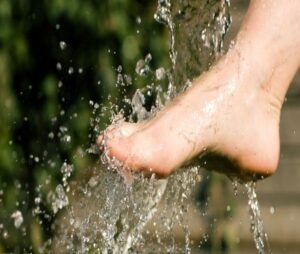
✨ Techniques in Hydrotherapy:
- Steam Therapy: This is often used for relaxation, clearing nasal passages, and soothing muscles. The steam helps promote circulation, calm the mind, and detoxify the body.
- Cold and Hot Water Treatments: Alternating between hot and cold water can help stimulate blood flow and improve circulation. Cold water promotes the constriction of blood vessels, while hot water helps dilate them, encouraging optimal circulation throughout the body.
- Water-Based Relaxation: Gentle water therapies, such as soaking in warm water or using cold compresses, help relax muscles and reduce inflammation, allowing for faster recovery.
🌸 Benefits of Hydrotherapy:
- Pain Relief: Hydrotherapy can soothe joint and muscle pain, reduce inflammation, and aid in the detoxification process.
- Enhanced Circulation: The alternating temperature treatment helps improve blood flow, thereby improving nutrient delivery and waste removal from the body.
- Relaxation: Hydrotherapy is a calming experience that can help reduce stress and promote overall mental well-being.
Water’s natural soothing properties help to relax the body and mind, reducing anxiety and encouraging overall healing.
🌿 A Holistic Approach to Well-being
Both reflexology and hydrotherapy represent the naturopathic commitment to promoting wellness through natural, non-invasive treatments. These therapies are designed to work with the body’s innate abilities, improving physical, mental, and emotional health. By addressing the root causes of discomfort and imbalance, these treatments can help restore a sense of well-being and balance in life.
Incorporating these therapies into your wellness routine can contribute to:
- Reduced stress
- Improved circulation and detoxification
- Enhanced relaxation and pain relief
Embrace these natural approaches as part of your holistic healing journey to live a healthier and more balanced life.
Hydrotherapy and Yoga: Natural Healing Therapies for Pain Relief and Detoxification
Naturopathy embraces natural, holistic treatments that work with the body’s intrinsic healing abilities. Hydrotherapy and yoga are two such therapies that not only promote physical wellness but also address mental and emotional well-being. These therapies, particularly when combined, create a powerful system for detoxification, pain relief, and circulation improvement.
🌿 Hydrotherapy: The Power of Water
Hydrotherapy uses water in various forms—cold, hot, and contrast (alternating hot and cold)—to treat a variety of physical conditions. The therapeutic benefits of water help to relax muscles, improve circulation, and address many common ailments, from joint pain to respiratory issues.
✨ How Hydrotherapy Works:
- Cold Water Therapy: Cold water causes blood vessels to constrict, which helps reduce inflammation and pain. It’s particularly useful for swelling and joint pain. Cold water therapy also stimulates blood circulation and promotes the body’s natural detoxification processes.
- Hot Water Therapy: Hot water promotes blood vessel dilation, which helps relax muscles, improve circulation, and alleviate pain. It can be used to reduce muscle tightness, improve joint flexibility, and relieve chronic pain.
- Contrast Hydrotherapy: Alternating between hot and cold water is highly effective for enhancing circulation and reducing both pain and inflammation. It helps maintain muscle relaxation, reduce joint pain, and improve overall circulatory health.
🌸 Benefits of Hydrotherapy:
- Pain Relief: Hydrotherapy is especially effective for treating muscle pain, joint pain, and inflammation. Alternating hot and cold water can significantly reduce pain and swelling.
- Skin and Respiratory Health: Steam or hot baths improve circulation and cleanse the body. Steam inhalation can help clear mucus and relieve congestion, while warm baths help improve skin condition.
- Detoxification: Hydrotherapy promotes the detoxification process, helping the body flush out toxins and accumulated waste. This can relieve conditions like constipation and digestive issues, as water helps stimulate the digestive system and promotes gut health.
For example, someone experiencing shoulder pain from prolonged sitting at work can benefit from hot water therapy to relax the muscles and improve blood flow. Cold water therapy, on the other hand, will help reduce inflammation and swelling.
🧘♀️ Yoga: Healing Through Movement and Breath
Yoga complements hydrotherapy by improving blood circulation, muscle relaxation, and overall well-being through physical postures and breathing exercises. It opens the body’s energy pathways, increases flexibility, and brings mental relaxation.
✨ How Yoga Enhances Healing:
- Improves Circulation: Yoga poses promote the flow of blood to all parts of the body, especially in areas where tension may be trapped, such as the neck, shoulders, and back.
- Muscle Relaxation: By focusing on stretches and muscle movements, yoga helps to release tight muscles and reduces overall tension in the body.
- Breathwork: Yoga emphasizes breathing exercises that enhance oxygen flow to the body and stimulate the nervous system, helping to balance the body’s stress response.
🌸 Benefits of Yoga:
- Mental Clarity: Yoga helps relieve mental tension by calming the mind and promoting emotional well-being. Breathing exercises during yoga open the airways and calm the nervous system, reducing anxiety.
- Pain Relief: Regular practice can alleviate pain in areas such as the lower back, neck, and shoulders, and reduce the frequency of headaches.
- Improved Flexibility: Through dynamic stretching and posture alignment, yoga increases flexibility and mobility in the joints, which is especially beneficial for people with stiffness or chronic pain.
🌿 Combined Benefits of Hydrotherapy and Yoga
When combined, hydrotherapy and yoga work synergistically to enhance circulatory health, detoxification, and overall relaxation. Hydrotherapy works to cleanse and heal the body through water’s natural therapeutic properties, while yoga fosters a mind-body connection, allowing the body to stretch, breathe, and realign itself.
🌸 Holistic Healing Approach:
- Muscle and Joint Health: Alternating between hot and cold-water treatments and yoga stretches helps relax muscles, reduce inflammation, and improve flexibility and mobility.
- Detoxification: Steam or hot water therapy can cleanse the body of toxins, and yoga poses can support the digestive system, allowing for better detoxification and gut health.
- Stress and Anxiety Reduction: Yoga’s focus on mindful breathing and postures combined with the soothing effects of hydrotherapy help alleviate stress, improve mental clarity, and promote emotional wellness.
🌿 Hydrotherapy and Yoga: A Path to Natural Wellness
These therapies can be tailored to each individual’s needs, providing a natural, holistic way to promote health and vitality. By embracing both hydrotherapy and yoga, individuals can significantly improve their physical, emotional, and mental health, supporting a balanced, healthy lifestyle.
Always consult a qualified practitioner before starting any hydrotherapy treatment to ensure it is safe for your specific needs and conditions.
Water Cleansing and Hydrotherapy: Natural Therapies for Detoxification and Health Improvement
Water, one of the most essential elements in naturopathy, plays a significant role in natural detoxification, promoting healing, and improving overall health. Hydrotherapy involves various water-based treatments, including colon cleansing and steam therapy, which help detoxify the body, improve circulation, and provide relief from various conditions. Let’s explore these powerful therapies and their benefits.
🌿 Hydrotherapy for Detoxification
Hydrotherapy utilizes water in different forms—purified, oxygenated, and steam—to cleanse and detoxify the body naturally. A professional hydro therapist can guide these treatments, ensuring comfort and safety during the process.
✨ Oxygenated Water Cleansing
One form of hydrotherapy involves the use of oxygenated water to detoxify the body. This technique involves infusing water with oxygen, which is known to support the body’s natural detoxification processes. The oxygenated water helps to detoxify the skin, improve blood circulation, and enhance overall cellular health.
Benefits of Oxygenated Water Cleansing:
- Supports detoxification: Oxygenated water encourages the elimination of toxins from the body.
- Improves skin health: The oxygenation helps rejuvenate the skin, promoting a healthy, glowing complexion.
- Enhances circulation: Increased oxygen flow improves blood circulation, aiding in overall health and vitality.
This cleansing process should be done under the supervision of a trained professional to ensure its effectiveness and safety.
🌿 Colon Cleansing: A Key Detox Therapy
Colon cleansing, also known as colonic irrigation, is another powerful water-based therapy. In this treatment, purified warm water is introduced into the colon to flush out accumulated toxins, waste, and other impurities that may be causing discomfort or digestive issues.
✨ How Colon Cleansing Works:
A trained hydro therapist uses special equipment to carefully introduce warm water into the colon. This procedure helps:
- Detoxify the colon: Removes toxins, waste, and excess gas that may have built up.
- Relieve constipation: Improves digestion and bowel movements by clearing blockages.
- Enhance digestive function: Colon cleansing can help improve nutrient absorption by clearing the intestines of waste.
Important Considerations for Colon Cleansing:
- Comfort and positioning: Ensure that the patient is in a comfortable position throughout the process.
- Professional guidance: Always consult with a qualified hydro therapist before undergoing colon cleansing, as it should be done under professional supervision.
- Precautions: This treatment may not be suitable for people with certain health conditions, so a consultation with a specialist is essential.
By aiding in digestion improvement and constipation relief, colon cleansing supports the body’s natural detoxification processes.
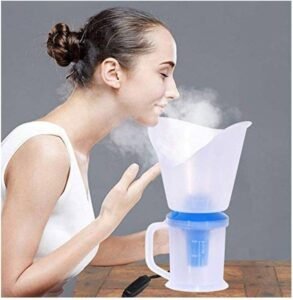
🌿 Steam Therapy: A Powerful Healing Tool
Another form of hydrotherapy is steam therapy, which involves the use of water vapor to treat a variety of health conditions. Steam therapy can be applied in different forms, such as steam baths or saunas, and offers numerous health benefits.
✨ How Steam Therapy Works:
- Moisturizes the skin: The steam helps to hydrate the skin, making it look more vibrant and healthier.
- Improves circulation: The heat from the steam dilates blood vessels, improving blood flow and circulation throughout the body.
- Relieves muscle tension: Steam relaxes tense muscles, helping to relieve pain and stiffness.
- Clears airways: Steam opens up the airways, which is beneficial for those with nasal congestion or respiratory issues.

- First, Do No Harm
Benefits of Steam Therapy:
- Detoxification: Heat-induced sweating helps to flush out toxins from the body, promoting natural detoxification.
- Improved skin health: By opening pores, steam helps cleanse the skin, reducing acne and other skin conditions.
- Enhanced circulation: Steam therapy dilates blood vessels, improving circulation and promoting healing in the body.
- Respiratory health: The moisture from the steam can help alleviate respiratory issues, clear mucus, and improve overall lung function.
Steam therapy is a gentle yet effective way to detoxify the body, improve skin health, and promote circulatory health.
🌿 Combining Hydrotherapy for Holistic Wellness
Both colon cleansing and steam therapy are integral parts of hydrotherapy, a holistic approach to improving health through water-based treatments. These therapies work together to promote natural detoxification, alleviate pain, improve digestion, and enhance overall wellness.
Key Benefits of Hydrotherapy:
- Detoxification: Both oxygenated water cleansing and colon cleansing help the body eliminate waste and toxins.
- Pain relief: Steam therapy and colon cleansing can help relieve discomfort associated with muscle tension, joint pain, and digestive issues.
- Improved skin health: Steam therapy helps open pores and hydrate the skin, while oxygenated water promotes skin rejuvenation.
- Enhanced circulation: Both therapies help improve blood flow, contributing to better overall health.
Hydrotherapy, when done under professional supervision, is a safe, effective, and natural way to support the body’s detoxification process and improve overall health.
Sun Therapy (Heliotherapy): Harnessing the Healing Power of Sunlight
Sunlight, often seen as a source of warmth and energy, has long been recognized for its medicinal properties. In naturopathy, heliotherapy—or sun therapy—uses the power of sunlight to improve health, boost immunity, and enhance overall well-being. This therapy leverages natural sunlight to treat various health conditions, promoting healing and rejuvenation for both the body and mind.
🌞 What is Heliotherapy?
Heliotherapy, or sun therapy, involves exposing the body to sunlight in controlled doses. The practice harnesses the natural benefits of sunlight, including the healing properties of visible light and infrared rays. Sunlight is a vital part of the naturopathic healing process, and it is used as a natural remedy for various ailments.
✨ How Sunlight Heals:
- Infrared Rays: These penetrate the skin, improving blood circulation, reducing pain, and promoting overall healing.
- Visible Light: It helps regulate the body’s natural circadian rhythm, aiding in better sleep and overall vitality.
- Vitamin D Production: Sunlight stimulates the production of Vitamin D, which is crucial for bone health, immune function, and mood regulation.
Sunlight has a profound impact on the body, enhancing immune system function, skin health, and even mental well-being.
🌞 Benefits of Heliotherapy
✨ Boosts Immunity
- Sunlight enhances white blood cell production, boosting the immune system and helping the body fight off infections.
- It increases antibody production, which strengthens the body’s defense mechanisms.
✨ Regulates Mood
- Exposure to sunlight stimulates the production of serotonin, a hormone that promotes feelings of well-being and happiness.
- It helps regulate mood, reducing feelings of sluggishness and combating symptoms of seasonal affective disorder (SAD).
✨ Improves Skin Health
- Sunlight is essential for calcium absorption and bone health.
- Controlled sun exposure helps with skin healing, reducing inflammation, and promoting tissue regeneration.
✨ Pain Relief and Circulation
- Infrared light in sunlight improves blood circulation, reducing muscle tension and promoting relaxation.
- It can help alleviate chronic pain conditions, providing natural relief for conditions like arthritis and muscle stiffness.
🌞 Heliotherapy and Mental Health
In addition to its physical benefits, sun therapy has a positive effect on mental health. By increasing serotonin levels, sunlight exposure can improve mood, reduce stress, and combat feelings of anxiety and depression. This makes heliotherapy a valuable tool in naturopathy for promoting emotional balance and mental clarity.
🌞 Precautions for Safe Sun Exposure
While sunlight has numerous health benefits, it’s important to practice safe sun exposure to avoid potential risks. Here are some key safety considerations:
- Short Duration: Limit exposure to sunlight, especially during peak hours (10 a.m. to 4 p.m.), to prevent skin damage.
- Use Sunscreen: Always apply sunscreen to protect sensitive skin from harmful UV rays, especially for individuals with fair or sensitive skin.
- Hydration: Stay hydrated, as sun exposure can lead to dehydration, especially in hot climates.
- Sensitive Skin: Individuals with sensitive skin, children, and elderly adults should be particularly cautious, limiting sun exposure to short periods and ensuring protection with sunscreen or clothing.
🌞 Heliotherapy for Specific Conditions
Heliotherapy can be used to treat a wide range of health conditions, including:
- Vitamin D deficiency: Sun exposure helps boost Vitamin D levels, which are essential for bone health, immune function, and overall vitality.
- Skin Conditions: Sunlight can improve conditions like eczema, psoriasis, and acne by reducing inflammation and promoting skin healing.
- Joint and Muscle Pain: The infrared rays in sunlight help relax muscles, reduce pain, and improve circulation, making it effective for conditions like arthritis and muscle stiffness.
🌞 Incorporating Heliotherapy into Your Wellness Routine
Heliotherapy is a natural, accessible, and effective way to support your naturopathic wellness routine. To gain the full benefits of sun therapy:
- Start Slow: Gradually increase your exposure to sunlight, especially if you have sensitive skin or are new to sun therapy.
- Practice Moderation: Aim for moderate sun exposure, ensuring that you don’t overexpose your skin to harmful UV rays.
- Combine with Other Therapies: Sun therapy can be incorporated alongside other naturopathic treatments such as hydrotherapy or massage therapy to promote overall wellness.
Fasting Therapy: A Powerful Natural Detoxification Treatment
Fasting is one of the oldest and most effective natural therapies, used for centuries to promote detoxification, improve health, and support the body’s natural healing process. Fasting therapy helps the body eliminate accumulated toxins, enhances digestive function, and rejuvenates overall well-being. By giving the digestive system a break, fasting allows the body to focus on detoxification and healing.
🥑 What is Fasting Therapy?
Fasting therapy involves abstaining from food for a specific period to allow the body to detoxify and rejuvenate. During this period, the digestive system is allowed to rest, which enhances its efficiency. The body utilizes its internal resources, primarily fat stores, to eliminate toxins. This process helps in detoxifying the body, improving energy levels, and supporting the body’s natural healing processes.
Fasting can be done in several ways, including intermittent fasting, partial fasting, or a juice cleanse. Depending on the type of fasting, the body may undergo different levels of detoxification, and the approach can be adjusted to suit individual health needs.
🥗 Types of Fasting Therapy
✨ Intermittent Fasting
This involves cycling between periods of eating and fasting. It’s a popular method for detoxifying the body and promoting weight loss. During the fasting periods, the body shifts into a detoxification mode, allowing for natural healing and rejuvenation.
✨ Juice Fasting
In this approach, solid foods are replaced with freshly squeezed fruit and vegetable juices. These nutrient-dense juices provide vitamins, minerals, and antioxidants to help cleanse and hydrate the body while offering a break to the digestive system. Typically, juice fasting can last for a short period (such as 3 days) to help detoxify the body.
✨ Partial Fasting
Partial fasting involves consuming only specific, easily digestible foods such as vegetable soups, fresh fruits, and vegetable juices while avoiding heavier foods. This type of fasting can be used to cleanse the digestive system and support healing processes.
🥑 Benefits of Fasting Therapy
✨ Detoxification
Fasting helps the body eliminate toxins stored in fat cells, promoting a deep cleanse. This detoxification process improves digestion, reduces bloating, and enhances overall health.
✨ Digestive System Health
By giving the digestive system a break, fasting promotes better digestion and helps repair any damage to the gut lining. It can also help in the reduction of inflammation in the digestive tract and improve nutrient absorption.
✨ Improved Metabolism and Energy
Fasting can improve metabolism by enhancing the body’s ability to burn fat for energy. This leads to improved energy levels, a boost in mental clarity, and a sense of well-being.
✨ Weight Loss and Freshness
Fasting, particularly intermittent fasting, is known for supporting weight loss and promoting a healthier metabolism. It helps eliminate excess fat and can make the skin appear more vibrant and youthful.
🥗 Fasting Safety Considerations
While fasting offers many benefits, it’s essential to do it safely and under appropriate supervision. Hydration is crucial during any fasting therapy, as the body requires adequate fluids to support the detoxification process and prevent dehydration. It’s also important to choose easily digestible foods when breaking the fast, such as fruits, vegetable soups, and juices, to ensure a smooth transition back to normal eating.
Fasting should be done with caution, especially for individuals with pre-existing health conditions such as diabetes, heart disease, or eating disorders. Always consult a qualified naturopath or healthcare provider before beginning any fasting regimen to ensure it aligns with your health goals. 
🔥 Heat Therapy: Promoting Healing and Flexibility
Another essential therapeutic element in naturopathy is heat therapy. This technique uses heat to improve blood circulation, alleviate pain, and promote muscle relaxation. Heat therapy helps in enhancing nutrient and oxygen flow to tissues, thereby improving muscle flexibility and joint health.
✨ Types of Heat Therapy
- Dry Heat Therapy: This involves using heat sources like heating pads, hot water bottles, or electric blankets. Dry heat is effective for localized pain relief and muscle relaxation.
- Moist Heat Therapy: Moist heat is often used in the form of warm towels, steam therapy, or warm baths. The moisture helps to penetrate deeper tissues, providing enhanced muscle relaxation and improved blood flow.
- Infrared Heat Therapy: This type of heat therapy uses infrared light to penetrate deep into the tissues. It can be applied through infrared lamps or saunas, promoting enhanced circulation, pain relief, and overall healing.
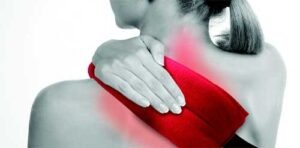 🔥 Benefits of Heat Therapy✨ Pain Relief
🔥 Benefits of Heat Therapy✨ Pain Relief
Heat therapy is particularly effective in relieving chronic pain conditions such as arthritis and muscle strains. The warmth helps to relax tight muscles, reduce stiffness, and improve overall mobility.
✨ Improved Circulation
By dilating blood vessels, heat therapy promotes better circulation, which in turn increases the flow of oxygen and nutrients to the tissues. This can speed up the healing process, reduce muscle soreness, and promote overall well-being.
✨ Muscle and Joint Flexibility
Heat therapy helps to increase muscle flexibility and joint mobility, making it a valuable tool in managing chronic pain and improving range of motion.
The Power of Heat Therapy and Breathing Techniques for Healing and Stress Relief
Heat therapy and breathing techniques are two powerful naturopathic approaches that support healing, relieve pain, and enhance overall well-being. Both therapies have been used for centuries to manage stress, reduce muscle tension, and promote relaxation. By utilizing heat therapy to alleviate physical discomfort and proper breathing to enhance detoxification and balance, these practices work together to support both the body and mind.
🍃 Heat Therapy: A Natural Solution for Pain and Stiffness
Heat therapy is an effective and natural treatment for various types of pain, including muscle pain, joint stiffness, menstrual cramps, and sports injuries. The warmth helps to improve circulation, relax muscles, and reduce pain. Moist heat—such as warm, damp towels or heating pads—applies soothing warmth to the affected area, enhancing the healing process.
✨ Benefits of Heat Therapy
- Pain Relief: Heat therapy is particularly beneficial for chronic pain conditions like lower back pain, joint stiffness, and fibromyalgia. Applying warmth to the affected area helps relax tense muscles and ease discomfort.
- Reduced Muscle Tension: Heat relaxes tight muscles, which can relieve tension, increase flexibility, and improve mobility. This is especially helpful after sports injuries or for general muscle tightness.
- Menstrual Cramp Relief: Applying heat to the abdomen can relieve discomfort associated with menstrual cramps, easing muscle spasms and improving blood circulation.
- Stress and Anxiety Reduction: The warmth from heat therapy can help calm the nervous system, reduce stress, and induce a state of relaxation. By triggering the body’s natural relaxation response, heat therapy can help ease feelings of tension and anxiety.
✨ How to Use Heat Therapy
- Heating Pads and Hot Water Bottles: Apply a heating pad or hot water bottle to the affected area to reduce pain and stiffness. For localized relief, these items provide consistent warmth.
- Moist Heat: Soak a towel in warm water, wring it out, and place it over the affected area. The moisture, combined with the heat, penetrates deeper into muscles, providing a more effective and soothing treatment for chronic pain or stiffness.
For example, chronic lower back pain can be effectively treated with a warm heating pad applied to the lower back. This helps to decrease pain, relax muscles, and promote healing.
🍃 Breathing Techniques: Boosting Healing and Balancing Energy
Breathing plays a crucial role in maintaining the body’s balance and energy levels. It is a natural way to detoxify, improve oxygenation, and activate the body’s relaxation mechanisms. Proper breathing can support the body’s detoxification processes by helping to remove toxins, including carbon dioxide, and increase lung capacity.
✨ The Benefits of Proper Breathing
- Detoxification: Breathing deeply helps to expel toxins from the body. Proper exhalation releases carbon dioxide and other waste products, supporting the body’s natural detoxification process.
- Stress and Anxiety Relief: Focused breathing activates the parasympathetic nervous system, which induces a state of relaxation, lowers stress levels, and calms the mind. It is especially useful for stress relief and anxiety management.
- Enhanced Oxygenation: Deep, controlled breathing increases the amount of oxygen in the blood, which nourishes the brain and muscles, improving overall body function and energy levels.
- Balance and Clarity: Proper breathing techniques help clear the mind, focus energy, and restore balance to the body’s energy channels. This leads to improved mental clarity and emotional stability.
✨ Breathing Techniques for Better Health
- Deep Breathing: Focus on slow, deep inhalations and exhalations to activate the body’s natural relaxation response. This promotes stress relief and ensures the optimal functioning of the nervous system.
- Forceful Exhalation: A technique that involves forcefully exhaling through the nose or mouth helps clear the lungs, expel toxins, and stimulate energy flow throughout the body.
- Vigorous Breathing: For a quick energy boost, practice forceful or vigorous inhalations and exhalations. This increases oxygen intake, energizes the body, and clears the mind, leaving you feeling alert and refreshed.
🍃 Combining Heat Therapy with Breathing for Maximum Benefits
By combining heat therapy with breathing techniques, you can create a holistic approach to pain management and stress reduction. While heat therapy alleviates physical discomfort and promotes muscle relaxation, proper breathing restores energy balance, calms the mind, and enhances the body’s natural detox processes.
For example, using a heating pad for lower back pain while practicing deep breathing can significantly reduce muscle tension, increase relaxation, and improve overall well-being. This combination helps stimulate blood circulation, relax muscles, and enhance mental clarity.
The Healing Power of Nature: Naturopathic Approaches to Stress Reduction and Wellness
In our fast-paced, modern world, it’s easy to become disconnected from the natural world around us. However, naturopathic healing encourages us to reconnect with nature and its therapeutic effects. Nature has always been regarded as the best doctor, and its healing powers are grounded in its basic elements: sunlight, air, water, and earth. These natural elements offer valuable tools for promoting overall wellness, reducing stress, and improving mental and physical health.

🍃 The Importance of Connecting with Nature
Reconnecting with nature is one of the simplest yet most effective ways to improve our health and well-being. The vital principles of nature-based therapies focus on the rejuvenating effects of natural environments on the body and mind. Whether it’s through sunbathing, gardening, or walking barefoot on grass, spending time in nature has numerous benefits for mental and physical health.
✨ The Healing Effects of Nature
- Stress Reduction: Spending time outdoors, especially in green spaces, reduces stress and fatigue. The calming effect of nature has been proven to lower cortisol levels, promoting relaxation.
- Improved Sleep Patterns: Exposure to natural sunlight regulates our internal circadian rhythms, improving sleep quality. Sunlight also boosts serotonin production, which promotes mood regulation and better sleep.
- Mental Clarity and Focus: Nature improves mental clarity by providing a peaceful, distraction-free environment that fosters relaxation and mindfulness. Regular nature walks help clear the mind and improve focus.
- Immune System Boost: The natural world offers a wealth of healing properties that support our immune system. Fresh air, sunlight, and soil help strengthen the body’s defenses against illness.
 🌱 Therapeutic Practices in Nature-Based HealingThere are many simple yet powerful ways to harness the therapeutic effects of nature. These practices, part of naturopathic healing, focus on using natural elements to restore balance and well-being.
🌱 Therapeutic Practices in Nature-Based HealingThere are many simple yet powerful ways to harness the therapeutic effects of nature. These practices, part of naturopathic healing, focus on using natural elements to restore balance and well-being.
✨ Morning Nature Walks
A simple 30-minute walk in a nearby park or green space can work wonders for your physical and mental health. Morning walks help improve cardiovascular health, boost energy levels, and provide the perfect opportunity to reconnect with nature. Whether it’s a mountain hike or a local park stroll, immersing yourself in fresh air and nature helps clear the mind and improve overall well-being.
✨ Gardening and Planting
Gardening is a therapeutic activity that promotes both physical and emotional well-being. Digging in the soil, planting seeds, and nurturing plants offers several benefits, including:
- Stress relief through physical activity and mindfulness.
- Improved mood by connecting with nature and watching plants grow.
- Increased physical fitness through activities like bending, planting, and watering. Gardening can also improve your immune system, strengthen your bones, and boost cardiovascular health.
✨ Walking Barefoot on Grass
Known as earthing or grounding, walking barefoot on natural surfaces like grass helps to reconnect with the earth’s energy. This simple activity has been shown to reduce stress, promote relaxation, and improve mood. It also helps improve circulation and muscle flexibility.
🌿 Aromatherapy: Harnessing the Power of Essential Oils
Aromatherapy is another powerful form of nature-based healing. By using essential oils extracted from plants, flowers, leaves, and roots, you can support the body’s natural healing processes and restore balance to the mind and body. Essential oils are absorbed through inhalation and stimulate the brain’s limbic system, which controls emotions, memories, and stress responses.
✨ Benefits of Aromatherapy
- Stress Relief: Essential oils like lavender, chamomile, and bergamot are known for their calming and stress-relieving properties. Inhaling these oils can reduce anxiety, promote relaxation, and help with insomnia.
- Mental Clarity: Certain oils like peppermint and rosemary can improve focus, mental clarity, and cognitive function.
- Emotional Balance: Aromatherapy has been shown to improve mood regulation and emotional stability, making it an effective tool for managing stress and anxiety.
✨ How to Use Aromatherapy
- Diffusers: Use an essential oil diffuser to fill your space with calming aromas that help reduce stress and enhance relaxation.
- Topical Application: Essential oils can also be applied to the skin (diluted with a carrier oil) for targeted therapeutic effects. For example, lavender oil can be massaged into the temples to relieve tension.
🌞 Sunlight Therapy: The Power of Sun Exposure
Sunlight therapy, or heliotherapy, is one of the most basic yet powerful forms of natural healing. Sunlight helps regulate sleep patterns, boosts Vitamin D levels, and improves overall mood. Exposure to sunlight increases the production of serotonin, the “feel-good” hormone, which plays a crucial role in mental health.
✨ Benefits of Sunlight Therapy
- Boosts Vitamin D Levels: Sunlight is the most natural source of Vitamin D, which is essential for bone health, immune function, and mood regulation.
- Improves Mood: Sun exposure stimulates serotonin production, helping to alleviate symptoms of depression and seasonal affective disorder (SAD).
- Supports Healthy Sleep: Sunlight exposure in the morning helps regulate the body’s circadian rhythm, leading to better sleep quality and overall well-being.
✨ How to Safely Enjoy Sunlight Therapy
- Moderation: Ensure you get adequate sun exposure while avoiding overexposure. Aim for 15-30 minutes of sunlight daily, depending on skin type.
- Protective Measures: Always use sunscreen if you’re going to be exposed to the sun for longer periods to protect against skin damage.
🌿 The Importance of Regular Connection with Nature
Incorporating nature into your daily routine can have profound effects on your physical, mental, and emotional health. Whether it’s through morning walks, gardening, sunbathing, or aromatherapy, the natural world offers a variety of healing therapies that can reduce stress, improve sleep, and enhance overall well-being. By embracing the vital elements of nature—sunlight, air, water, and earth—we can experience improved health and a deeper sense of balance.
Reconnect with nature today and discover the therapeutic benefits it has to offer. Nature is the ultimate healer, and its powers can help you feel more grounded, relaxed, and revitalized.
Essential Oils and Sound Therapy: Powerful Naturopathic Tools for Healing and Wellness
In naturopathy, essential oils and sound therapy are used as natural, effective remedies to promote overall well-being. These therapeutic methods are designed to support the body’s natural healing processes, reduce stress, and improve various health conditions. Let’s explore how these two healing approaches can enhance your physical, emotional, and spiritual health.
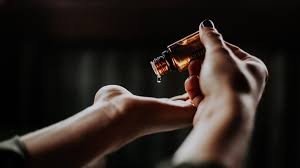
🌿 The Healing Power of Essential Oils
Essential oils are concentrated plant extracts that carry the therapeutic properties of their source. They can be used for various purposes, including relaxation, pain relief, skin care, and improving sleep quality. These oils can be applied topically, diffused into the air, or inhaled directly to benefit from their healing effects.
✨ Popular Essential Oils and Their Benefits
- Lavender Oil: Known for its calming properties, lavender oil can help reduce stress and improve sleep quality. It is particularly useful for those struggling with insomnia or anxiety.
- Sandalwood Oil: This oil is often used for relaxation, as it promotes a peaceful mind and enhances sleep quality. Sandalwood oil can help calm the nervous system and improve overall mood.
- Tea Tree Oil: With its antimicrobial and antiseptic properties, tea tree oil is perfect for skin care, especially for acne. It can also help with gut detoxification and infection prevention.
- Peppermint Oil: Known for its ability to relieve muscle and joint pain, peppermint oil can also help alleviate headaches. It is often used for pain relief and to stimulate circulation.
- Rosemary Oil: This oil is effective in easing muscle tension, reducing joint pain, and improving circulation.
- Citrus Oils (Orange, Lemon, etc.): Citrus oils are excellent for uplifting mood, reducing fatigue, and enhancing energy levels. They are also effective for minor burns and wound healing.
✨ How to Use Essential Oils
- Diffusing: Add a few drops of your chosen oil to a diffuser to fill the room with its therapeutic aroma.
- Inhalation: You can inhale essential oils directly from the bottle or through steam inhalation.
- Topical Application: Essential oils should be diluted with a carrier oil before applying them to the skin to avoid irritation. For example, apply diluted lavender or tea tree oil to your temples to relieve tension or acne.
- Cold Compress: Add essential oils to a cold-water compress to help with pain relief or inflammation.
 ✨ Precautions When Using Essential Oils
✨ Precautions When Using Essential Oils
- Dilution is Key: Essential oils are concentrated, so it’s important to dilute them before use to prevent skin irritation.
- Moderation: Use essential oils in moderation. Overuse can lead to skin irritation or headaches.
- Consult a Professional: It’s always a good idea to consult a trained professional if you have underlying health conditions or if you’re unsure which oils to use.🎵 Sound Therapy: Using Vibrations to Heal the Body and MindSound therapy is an ancient healing method that uses sound vibrations to restore balance, reduce stress, and promote physical, emotional, and spiritual well-being. In sound therapy, different sounds, frequencies, and vibrations are used to influence brainwave patterns and support the body’s healing processes.
✨ Benefits of Sound Therapy
- Stress and Anxiety Relief: Sound therapy can help calm the nervous system, reducing feelings of fear and anxiety. Specific frequencies have been shown to help lower cortisol levels and induce relaxation.
- Improved Sleep: Nature sounds, such as rain or ocean waves, can help promote a deeper, more restful sleep by calming the mind and improving the quality of sleep.
- Enhanced Focus and Concentration: Certain frequencies, such as high-frequency vibrations, can improve concentration and cognitive function by creating a calm, focused mental state.
- Pain Relief and Faster Recovery: Sound therapy can also aid in reducing pain, stimulating circulation, and speeding up recovery by promoting the body’s natural healing processes.
- Emotional Healing: Sound therapy can help release suppressed emotions and enhance emotional clarity, making it beneficial for those struggling with emotional blockages.
✨ Types of Sound Therapy
- Binaural Beats: These are two different frequencies played in each ear to promote mental clarity, relaxation, or sleep. Binaural beats influence brainwave patterns to induce states like relaxation or focus.
- Nature Sounds: Listening to sounds from nature, such as rain, ocean waves, or wind, can help calm the mind, improve sleep, and reduce stress.
- Tuning Fork Therapy: Tuning forks are used to create specific sound frequencies that resonate with the body’s energy fields, promoting balance and healing.
- Solfeggio Frequencies: These ancient frequencies are used to promote healing, balance, and harmony within the body, mind, and spirit.
✨ How to Use Sound Therapy
- Listening to Soundtracks: Use recorded soundtracks with nature sounds, binaural beats, or solfeggio frequencies to promote relaxation or sleep.
- Sound Baths: Attend a sound bath session, where therapeutic sounds are created using gongs, bowls, or other instruments.
- Tuning Forks: You can also use tuning forks at home by following instructions from a qualified practitioner to target specific areas of your body in need of healing.
✨ Combining Essential Oils and Sound Therapy for Maximum Benefits
By combining the use of essential oils with sound therapy, you can enhance the healing process and achieve deeper relaxation and wellness. For example:
- Diffuse calming oils like lavender or sandalwood while listening to nature sounds or binaural beats to create a peaceful environment conducive to sleep or stress relief.
- Use peppermint or rosemary oil to relieve muscle tension while listening to soothing frequencies that help reduce pain and promote relaxation.
These naturopathic therapies offer a holistic approach to improving mental, emotional, and physical health. Whether you’re seeking relief from stress, pain, or anxiety, essential oils and sound therapy can work together to promote a sense of balance and well-being.
Exploring Effective Naturopathic Therapies: Sound Therapy, Silence Therapy, and Meditation
In the realm of naturopathy, various therapies aim to promote emotional and physical healing. Sound therapy, silence therapy, and meditation therapy are three powerful practices that support overall well-being, reduce stress, and foster emotional balance. These therapies provide natural, holistic methods to enhance healing, mindfulness, and relaxation. Let’s explore each of these therapies in detail.
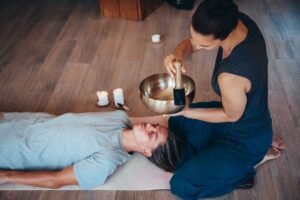
🎶 Sound Therapy: Healing Through Vibrations
Sound therapy is a holistic approach that uses sound vibrations to heal the body and mind. Specific frequencies and vibrations have been shown to influence physical and emotional well-being. The therapeutic use of sound can promote relaxation, alleviate pain, and improve mental clarity.
✨ Key Aspects of Sound Therapy
- Frequency and Vibrations: Different sounds and frequencies have specific applications in sound therapy. For instance, certain frequencies can target pain relief by resonating with specific areas of the body. Sound vibrations are known to promote relaxation, enhance emotional release, and reduce discomfort.
- Sound Tools: Tools like singing bowls, gongs, and mantras are used in sound therapy to create healing vibrations. Singing bowls and gong sessions can be used in group settings for a collective healing experience. The sound waves created by these instruments help balance the body’s energy, reduce stress, and enhance emotional clarity.
- Applications for Pain Management: Sound therapy is particularly effective in pain management. For example, tuning forks or specific frequencies can be applied to areas experiencing discomfort or pain to help reduce tension, relax muscles, and alleviate inflammation. Group sound therapy sessions, using instruments like gongs or chanting, can also offer emotional and physical healing benefits.
✨ Sound Therapy for Everyday Use
- Daily Relaxation: You can find sound therapy recordings on platforms like YouTube to use for relaxation. These recordings may include mantras or tuning frequencies designed to help with sleep, stress relief, or emotional healing.
- Insomnia Relief: A 50-year-old businessman struggling with insomnia can benefit from evening sound therapy sessions, using relaxing frequencies to ease tension and promote restful sleep.
✨ The Healing Power of Sound Therapy
Sound therapy can promote emotional release, restore balance, and encourage physical healing. Whether through individual listening or group sessions, sound therapy plays a significant role in reducing stress, improving focus, and alleviating pain.
🤫 Silence Therapy: Rejuvenating Through Stillness
While sound therapy relies on vibrations, silence therapy focuses on the absence of external noise. In today’s world, constant noise—whether from conversations, music, or traffic—can lead to overstimulation, resulting in stress, anxiety, and physical fatigue.
✨ The Role of Silence in Healing
Silence therapy involves quieting the mind and body, allowing the sympathetic nervous system to relax and activate the body’s natural healing processes. Taking time for silence helps restore mental clarity, improve focus, and reduce the stress that often accumulates from external noise and overstimulation.
✨ Benefits of Silence Therapy
- Stress Reduction: Silence allows the mind to rest and heal, lowering cortisol levels (the stress hormone) and promoting relaxation.
- Improved Sleep: Regular practice of silence therapy, such as 10-minute silent meditations during breaks, can improve sleep quality by calming the mind and body.
- Emotional Rejuvenation: Silence therapy offers a deep emotional balance by reducing mental chatter and promoting inner peace.
✨ Incorporating Silence Therapy into Daily Life
To experience the benefits of silence therapy:
- Set aside quiet moments throughout the day to disconnect from the noise around you.
- Practice mindful silence for 5-10 minutes during breaks or before bedtime. This can help clear the mind, reduce stress, and enhance focus.
🧘 Meditation Therapy: Enhancing Emotional and Physical Well-being
Meditation therapy is a well-known naturopathic practice aimed at fostering mindfulness, improving emotional health, and enhancing physical well-being. By focusing on breathing, mindfulness, or mantras, meditation offers a pathway to emotional healing and relaxation.
✨ The Principles of Meditation Therapy
- Mindfulness: Meditation therapy encourages focusing attention on the present moment, allowing for greater emotional balance and awareness. This process helps reduce negative emotions, stress, and anxiety.
- Regulation of the Nervous System: Meditation helps shift the body from the fight-or-flight response to the rest-and-digest mode, promoting healing and repair.
- Stress Reduction: Regular meditation lowers cortisol levels, improving emotional balance and reducing stress. Over time, it fosters greater emotional healing and mental clarity.
✨ Types of Meditation Therapy
- Mindful Meditation: Focus on the present moment without judgment. This practice encourages emotional release and relaxation.
- Guided Meditation: Involves listening to a guide who leads you through visualizations or relaxation techniques.
- Loving-Kindness Meditation: Cultivates feelings of compassion, love, and kindness towards yourself and others, enhancing emotional healing and connection.
- Transcendental Meditation: A technique that involves repeating a mantra to calm the mind and achieve deep relaxation.
✨ Meditation for Emotional and Physical Healing
- Stress and Anxiety Relief: Meditation therapy is highly effective in reducing stress and helping with emotional healing. It promotes a calm mind, balanced emotions, and improved energy flow.
- Energy Flow and Immunity: Meditation helps smooth energy flow throughout the body, strengthening the immune system and supporting overall health.
Combining These Therapies for Comprehensive Healing
Sound therapy, silence therapy, and meditation therapy are all effective on their own, but when combined, they provide a holistic approach to well-being. Regular practice of these therapies can improve emotional balance, reduce stress, enhance focus, and promote physical healing. Whether through listening to healing sounds, spending time in silence, or engaging in mindful meditation, these natural therapies offer a powerful way to support health and healing.
Naturopathy and the Power of Elemental Therapies: A Holistic Approach to Healing
Naturopathy is a natural healing science that promotes the body’s own power to heal by harmonizing with nature and life’s essential elements. In today’s session, we explored dynamic meditation, expressive therapies, and the five elemental pillars of naturopathy. Let’s walk through the highlights.
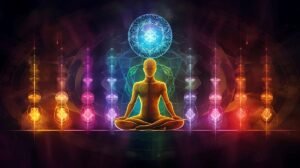
🧘♂️ Dynamic Meditation: Releasing Emotions Through Movement
Dynamic meditation is a powerful tool for emotional release. It involves movement, expressive actions, and conscious breathing to let go of suppressed emotions and stress.
🌬️ How It Works:
- Expressive Movements: Physical actions help release emotional blockages.
- Focused Breathing: Deep inhale and exhale patterns create emotional clarity and physical calmness.
- Distraction-Free Zone: Practiced in a safe, quiet space to allow total focus.
- Ideal for Professionals: Especially helpful for those dealing with work-related stress or headaches.
🕰️ Daily Routine Tips:
- Morning: 10-minute dynamic or focused breathing meditation.
- Lunch Break: Practice loving-kindness meditation to foster gratitude and positive energy.
- Evening: Use guided meditation to relax and wind down.
Dynamic meditation is not just a physical practice—it’s a journey of self-discovery, emotional transformation, and inner peace.
Overall Conclusion
Naturopathy is a holistic healing system that works with nature to restore and maintain health. It is based on the five elements — Earth, Water, Fire, Air, and Ether — each offering unique therapies that promote detoxification, relaxation, immunity, and overall well-being.
These natural therapies, like mud packs, hydrotherapy, sunbathing, fasting, steam baths, aroma therapy, sound healing, and meditation, help the body heal itself by enhancing its own innate power. Naturopathy focuses not just on curing disease but on preventing it by encouraging a balanced lifestyle and harmony with nature.
In a world full of stress, pollution, and artificial treatments, naturopathy provides a safe, effective, and natural path to physical, mental, and emotional wellness. It empowers individuals to live in tune with nature, promoting a healthy, happy, and meaningful life.
Nature is the best healer — and naturopathy is the path that leads us back to it.


